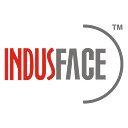In this digital age , web and mobile applications have become more complex. While developers are pressured to develop/ update apps and release new features quickly, IT security teams and organizations have a tough time keeping security risks under control. We have compiled a checklist to help organizations strengthen their application security in the current threat environment.
1. Adopt a DevSecOps Approach
The DevSecOps approach automatically bakes security into the development stages of the application in a bid to develop and deploy secure-by-design apps at the speed of Agile and DevOps. It emphasizes the need to identify and fix all kinds of vulnerabilities in the web application from day one of development. It helps organizations become proactive about security.
2. Implement a Secure SDLC Management Process
The next best practice in the application security checklist is implementing a secure software development lifecycle management process. To this end, developers must be security-trained to ensure they follow best practices in developing and maintaining apps.
Open-source tools are immensely beneficial on the cost, efficiency, and speed fronts, but they tend to expose applications to a significant number of vulnerabilities. Implementing secure SDLC management processes ensures that open-source vulnerabilities are secured, monitored, and regularly patched.
Further, you must adopt security tools that can be integrated into the developer’s environment. Such tools help developers ensure the security of the apps without compromising on speed or efficiency.
3. Continuously Track Your Assets
Visibility is non-negotiable in web application security; unless you know what assets exist, you will not protect them. So, you must continuously track all your assets. Intelligent scanners can do this with minimal human supervision or manual labor.
4. Adopt the Latest Technology in Vulnerability Management
Given the need for speed, agility, and accuracy, automation, AI with self-learning capabilities, security analytics, etc., revolutionize the vulnerability management process. Intelligent scanners run automatically on a daily and on-demand basis to keep identifying all known vulnerabilities in the application and its parts quickly and with complete accuracy. When integrated with a managed WAF, the identified vulnerabilities can be remediated promptly through automatic virtual patching until fixed by developers.
5. Regular Pen-Testing and Security Audits
This is another indispensable element of the web application security checklist. Apart from being compliance necessities, regular pen-testing and security audits are critical to all organizations. Since they are performed manually by certified security experts, they can identify unknown and business logic flaws that automated tools cannot. They also help understand the exploitability of vulnerabilities, the strength of security defenses and recommend ways to harden security.
6. Continuous Risk Assessment
You need to keep assessing the risks facing your organizations and keep them within your tolerance levels. While apps are not entirely un-hackable, risk assessment and prioritization help you set realistic goals, policies, and security standards.
7. Patch Management
It is not enough for you to identify vulnerabilities; they need to be immediately remediated through short-term measures (virtual patching) and for good through long-term fixes to ensure attackers do not exploit them. Through effective patch management, this can be accomplished. Further, patch management also includes updating third-party software, components, tools, etc., to ensure all patches from the vendor are applied.
8. Choose the Right Security Tools
Comprehensive, intelligent security tools part of a managed, end-to-end security solution enable organizations to fortify application security. Make sure that the security solution includes scanning tools, pen-tests, security audits, next-gen WAF, DDoS protection, false-positive management, patch management, reporting, customizable security, and encryption, among others.
9. Authorization, Authentication, and Access Controls
By following the principle of least privileges, you can ensure that not everyone has access to everything and performs only those actions they have authorization for. You can further strengthen web app security through multi-factor authentication and enforcing strong password policies.
10. Data Encryption
All data must be encrypted at rest or in transit, especially sensitive information such as usernames, passwords, etc. This helps prevent a whole range of attacks and data breaches. You can check this off in your web application security checklist through SSL certificates and robust cryptographic algorithms.
11. Input Validation
Any user input in the web application must be validated and sanitized to strengthen app security.
12. Maintain Proper Reporting and Documentation
This web app security checklist element provides you with a solid foundation to strengthen your security policies and controls, including your incident response plans.
13. Improve AppSec Capabilities Within Your Organization
From continuously augmenting the capabilities of developers and IT security teams to educating all stakeholders, you must keep improving your AppSec capabilities.
The Way Forward
Given that web security is a marathon and not a sprint, this web application security checklist is a good starting point and must be part of your ongoing action plan.
Originally published at https://www.indusface.com on February 11, 2022.
